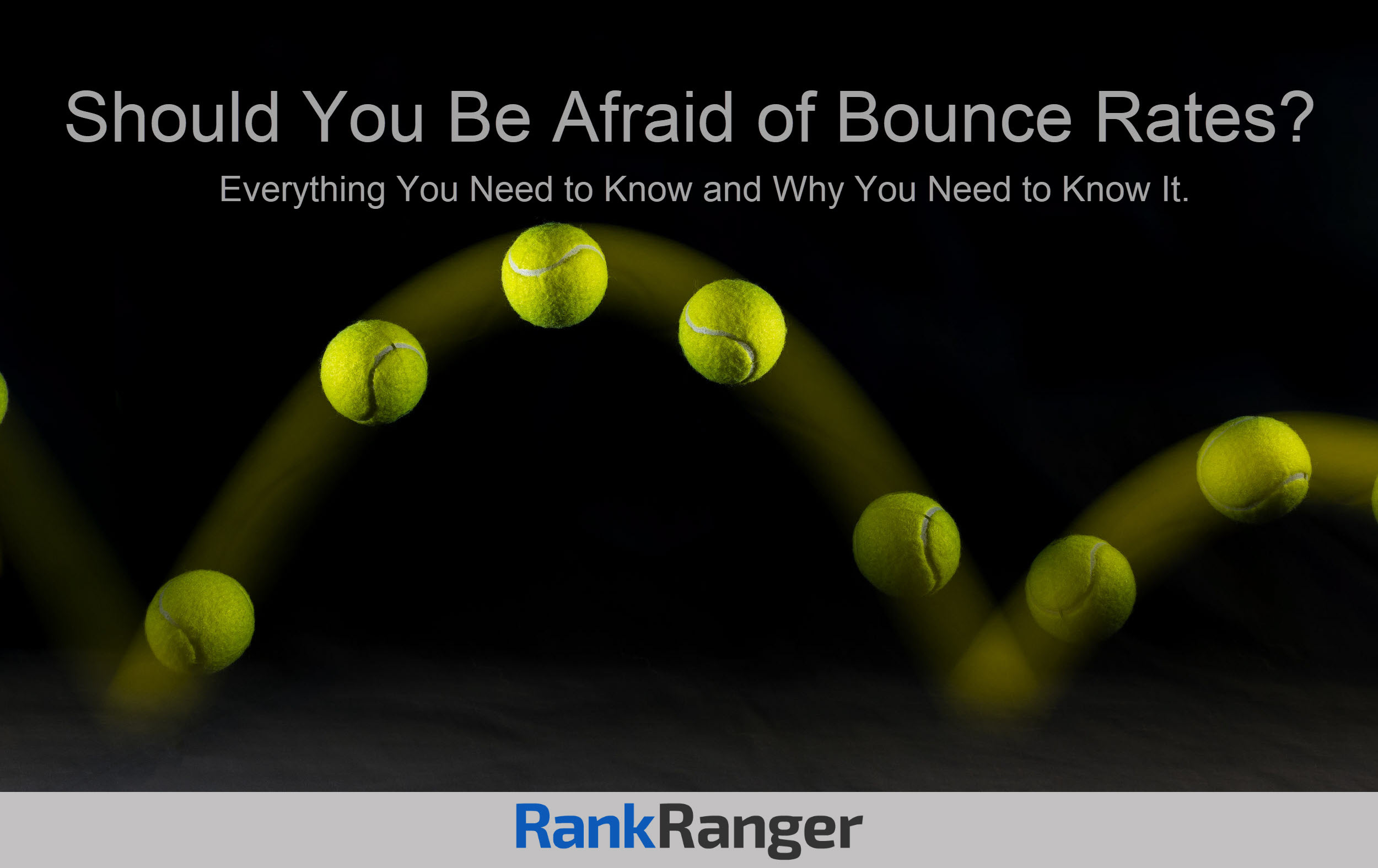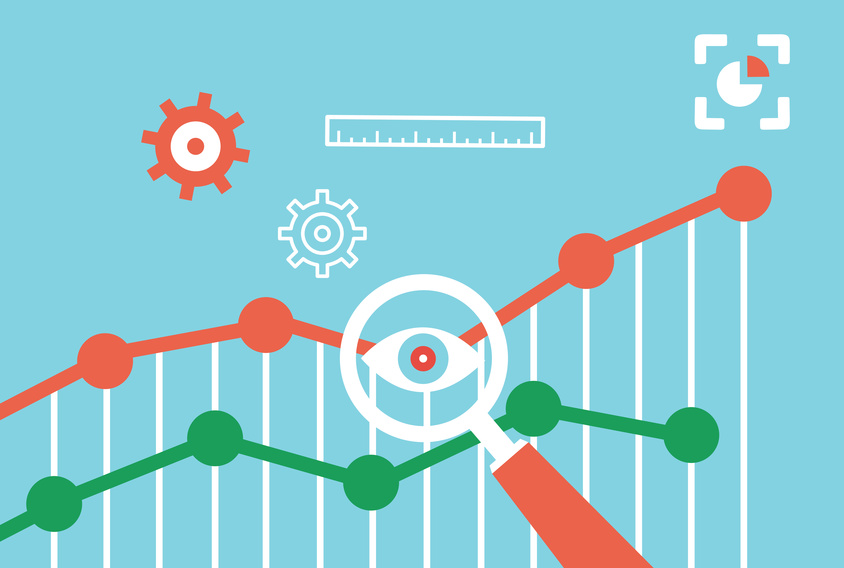Understanding Bounce Rates
Bounce Rate is one of those new-age SEO terms that seemingly came out of nowhere to confuse everyone in the content marketing industry.
As much as you may not like the idea, you’re eventually going to have to add Bounce Rate to your search optimization dictionary, whether for yourself or for your clients.
Google’s definition of a bounce is that it is a “single-page session.” What does that mean? Well, that translates to the action of a user clicking on your page and taking no more activity on your site from that page. In other words, the user is landing on your site and bouncing straight back out.
What Can Trigger a Bounce?
Given that a bounce involves someone leaving your site without further interaction, there are a few key triggers that we can discuss.
Returning to your browser window can trigger a bounce, as well as closing the browser, visiting a new URL, clicking on an outbound link, or timing out.
Once you or your client understand the what and why of Bounce Rates, the follow-up question is almost always going to be what is a good Bounce Rate.
Putting a definitive number on this is difficult. There is an immeasurable amount of tiny variables that play a part in it, so getting it down to one broad stroke number is nearly impossible.
What can be considered a good Bounce Rate largely depends on what kind of website you’re operating, and the industry that it finds itself in. You should always try to learn the benchmark.
Bounce Rate and Website Type
Let’s dive a little deeper into what makes a good Bounce Rate for the various different types of common websites:
Blogs and Content Pages
Blogs, in particular, have a pretty high average Bounce Rate. Blogs aren’t particularly written to send users down-the-funnel. They come for the content, absorb it, and then leave. That’s not to say you shouldn’t persuade them to stay, but just be aware that you’re going to have a tough time doing it.
As well, a lot of blog users are going to be clicking on the content from a social media site, making it increasingly likely that they’re going to return to the site that they were on after they finish with your post.
Informational Pages
Contact information pages are a perfect example of why some pages can have a higher Bounce Rate than others. When users visit the site, they are there for a single purpose, which is entering or receiving information. Once this purpose is fulfilled, they are going to go back to what they were doing.
While the interaction between you and the user may continue afterward through the use of email or SMS marketing, Google Analytics still counts this as a bounce.
E-Commerce and Retail
It shouldn’t come as a shock to realize that e-commerce and retail sites have a low Bounce Rate when compared to the others.
Rather than just coming to the site for one specific purpose, the user’s business may be more general. For example, rather than wanting to read a specific news piece, they may want to buy a new pair of shoes, which results in them clicking on several different makes and models.
Differences in Industry
As well as being aware that there is a staggering difference in Bounce Rate depending on what type of website you have, you also need to understand that there is a difference by industry.
However, different industries don’t make as big a difference as site type, which can make the difference between a Bounce Rate of 20% and 80%.
There are far too many industries to list off individually, but what you should know is a couple of benchmarks. Real estate has the best average industry Bounce Rate, ending up at around 44.5%. However, the food and dining industry has an average rate of 65.52%. (You can collect the data from the Google benchmarking tool. This allows you to see the average stats of over 1,600 different industries, so it could come in handy when trying to see how your website is holding up to the average.)
What Encourages a Low Bounce Rate
There are several different things that encourage a low Bounce Rate. Obviously, at the top of the list, you have website type and industry. Choosing a site that falls more in line with low Bounce Rates, combined with an industry that sits at the bottom of the percentage list, is going to give you a natural head start.
When developing your site and content, you need to consider why your target user is clicking on your website. As a review site, you’re going to experience a high Bounce Rate because a user is going to be searching for a specific review, reading it, and then moving on.
You need to think about why someone should browse your site. This is why eCommerce sites do so well with bounce. It is naturally designed to encourage users to browse through their products. It’s also easier to encourage browsing on retail sites, due to the fact that you can up-sell and offer exclusive deals on items.
Where Do I Find my Bounce Rate?
You can find your Bounce Rate on your Google Analytics account, like any other website metric that you may use.
Bounce Rate and Channel
What channel the visitor has used to get to your website also has an impact on whether or not they stay to look around.
How channels relate to your Bounce Rate can actually be very important for analyzing the ROI you’re getting on your various marketing campaign activities. It can also help tell you if your leads are working or not.
For those unaware, a channel refers to the way that users reach your site. There are a few different channels to analyze. Each way may come with its own specific marketing campaign, which is why it’s so important to be able to make sure that you’re getting your money’s worth.
The common channels that Google consider are as follows:
- Direct: This is when the user has entered your website address into the URL search bar.
- Organic: Users that have clicked onto your site from unpaid result page listings (therefore- high intent user)
- Paid: These are clicks that have come from pay-per-click search result campaigns.
- Display: Traffic that you have received from display advertising, like banner ads.
- Referral: This is when a user clicks on a link on an external site that takes them to yours.
- Social: This encapsulates all of the traffic that you get from people coming from social media.
- Email: These are visitors that got to your site via email inks.
Knowing the difference between the various channels and how each interacts with the Bounce Rate is absolutely critical in ensuring that your marketing strategy is working. Having a thorough knowledge of analytics ensures that you know what is optimized and what needs to be improved.
You also need to be keeping in mind that industry and website types are still playing a part in the equation, so you need to be able to analyze all the data in the context of one another to truly get a grasp as to how good your Bounce Rate is.
The Bounce Rate by channel changes dramatically depending on what type of site you’re running. Display ads are great for marketing sites, but not so much for online communities, and so on.
In general, though, display advertisement has the highest Bounce Rate out of all of the channels. There are a few reasons for that, including that banners aren’t trusted, are considered clutter, and can be shown to people that have no interest in your site.
Email has the lowest Bounce Rate, and that all comes down to interest. With an email list, you’re marketing to a target audience that already has an interest in your site, making a bounce less likely.
Bounce Rate and Devices
Lastly, the final metric that you need to bring into the Bounce Rate equation is what device your visitor is on.
Mobile users have a higher Bounce Rate than those on desktop. For those that prefer to use a tablet, they fall somewhere in the middle of a mobile device and a desktop.
This is a trend that we see between the three devices over every single industry. There is never a change in that structure. That shouldn’t come as a surprise to anyone. Our attention span using mobile is significantly worse than if we were using a laptop or PC. We are more inclined to close things down, switch apps, throw on a video, and so on.
If you decide that you want to combat this, you need to make sure that your site is designed with a mobile-friendly UI and that it adapts to the resolution of various mobile screens.
That’s All Well and Good, But What’s a Good Bounce Rate?
With all of the technical data analyst information out of the way, we can now comb through the fine details of a good Bounce Rate.
Before getting an average rule of thumb to work off, you should try and change the question a little bit.
Rather than asking what a good Bounce Rate is, you should be asking how your Bounce Rate compares to the industry average. As a metric, this is the best way to determine whether or not your site and marketing campaign is fully optimized, and that you are reaching your SMART goals.
With that, as a rule of thumb, you can follow these benchmarks: A Bounce Rate between 26% and 40% is great, 40 to 50% is average, 50 to 70% is above average, and anything over 70% should be cause for concern.
Analyzing Your Bounce Rate
Your Bounce Rate can be a tricky and deceiving metric depending on how you segment your data. It can appear good or bad based on this alone, meaning that the truth of the matter can be skewed very easily.
It is also a very context reliant metric to hold in any high regard. How good your Bounce Rate is depends on a large variety of different attributes that need to be taken into consideration at the same time such as time On Page.
For instance, if a site user is on your page for a long time, say ten minutes, the fact that they didn’t take any other action would not indicate a flaw in your content.
This might seem like a lot of interpretation for something so small, and it is, but understanding your Bounce Rate is something that you simply must do in order to ensure that your marketing campaign is effective.
If you’re going to focus on anything from this article, let it be the relationship between Bounce Rate and channels. This is the metric that is going to give you the most bang for your buck when it comes to valuable data.
Analyze this well, and you’re going to be able to understand not just what area of your marketing campaign isn’t working, but exactly whereabouts in the funnel you’ve sprung a leak.
One important thing you need to keep in mind going forward is to not let your Bounce Rate overshadow the other aspects of your operation. If you obsess over it, you’re going to find that you are hurting your overall business in pursuit of a percentage that means nothing if you’re not getting the ROI that you’re looking for.
So, What Have We Learned About Bounce Rates?
Hopefully, throughout the course of this article, you’ve learned all you need to know about Bounce Rate.
We’ve covered everything about the metric, from what it is, why it’s important, what it’s used for, how to find it, and how it interacts with other aspects of your site’s performance.
With that, you can never know too much about the world of digital marketing and SEO, so we encourage you to continue on your path in the pursuit of knowledge.
The more you learn about this aspect of your business, the more successful your business is going to be. Not only is it going to help you make things right, but the knowledge is going to arm you with the ability to see exactly what you may be doing wrong in the first place.





